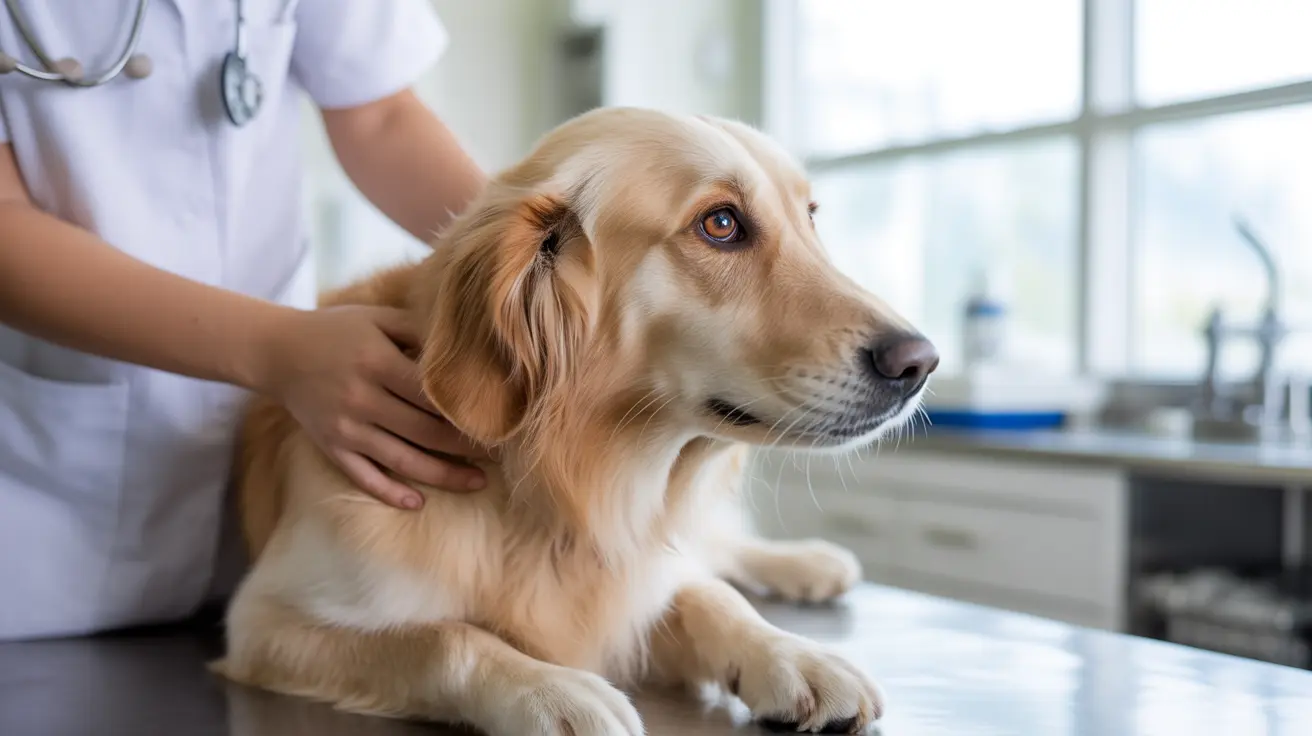Essential Traveling with Your Dog Tips for Every Mode of Transportation
Planning a trip with your furry companion? Traveling with your dog tips can make the difference between a stressful ordeal and an enjoyable adventure for both you and your pet. Whether you're considering public transportation, road trips, or other travel methods, proper preparation ensures your dog's comfort and safety while meeting various regulatory requirements.
Modern transportation systems are becoming increasingly pet-friendly, but each mode comes with unique challenges and restrictions. From understanding carrier requirements to managing your dog's anxiety, successful pet travel requires thorough planning and the right knowledge to navigate complex policies and procedures.
Understanding Public Transportation Policies for Dogs
Public transportation policies vary significantly across different systems and regions, making research essential before embarking on your journey. Most transit authorities distinguish between service dogs, which have special legal protections under the Americans with Disabilities Act, and regular pets, which face more restrictions.
Train Travel with Dogs
Train travel offers some of the most pet-friendly options among public transportation modes. Amtrak recently reinstated pet travel with specific guidelines: only four pets are allowed per train on a first-come, first-served basis, with pets and carriers not exceeding 20 pounds. Dogs require a $25 fee, and only one pet is permitted per passenger.
Regional train services often have their own policies. The MARC train serving Maryland, West Virginia, and Washington D.C. allows small pets in carriers, while international options vary widely. In Germany, Deutsche Bahn permits small pets in carriers free of charge, while larger dogs require a half-price ticket. European train travel generally accommodates pets with proper documentation and adherence to carrier, muzzle, and leash requirements.
Navigating Subway and Light Rail Systems
Urban subway systems typically require pets to be contained in carriers. New York City's Metropolitan Transportation Authority mandates that pets be enclosed in containers and carried so they don't annoy other passengers. The carrier can rest on your lap or the floor but shouldn't occupy an adjoining seat or foot space.
San Francisco's Bay Area Transit allows small dogs in official pet carriers and permits dogs on cable cars, MUNI buses, and subways if they're leashed and muzzled for safety. Washington D.C.'s Metrorail and Metrobus allow dogs if carried in secure containers, while Chicago Transit Authority permits small pets in protective carriers that fit under seats.
Bus Transportation Options
Bus travel policies for pets are generally more restrictive than trains. Most long-distance bus companies, including Greyhound, prohibit animals except for certified service dogs. However, local urban transit systems often provide more flexibility with relaxed guidelines where carriers may not be required, but dogs must remain leashed.
Local bus policies typically require dogs to stay on your lap or the floor next to you, as seats are reserved for humans. Lap dogs often ride free, while larger dogs may pay the standard fare. Bus drivers maintain discretion to limit the number of dogs on board or determine if a dog's behavior is problematic.
Preparing Your Dog for Different Transportation Modes
Socialization and Behavioral Training
Successful pet travel begins with proper socialization and training. Your dog must be comfortable around strangers and other animals, as public transportation exposes them to crowded, unfamiliar environments. Teaching basic commands such as "down" and "stay" is essential for maintaining control in confined spaces.
Desensitization to common transit noises helps reduce anxiety during travel. Gradually expose your dog to sounds similar to those they'll encounter on buses, trains, or subways. Practice walking calmly on a short leash, as space constraints on public transportation require precise control.
Health and Documentation Requirements
Ensure your dog's vaccinations are current and maintain up-to-date health records, as some transportation providers may request proof of immunizations. Your dog should have proper identification through microchips and collar tags in case of separation during travel.
For international travel, documentation requirements become more complex, potentially including EU pet passports, quarantine certificates, and specific health clearances depending on your destination country's regulations.
Carrier and Equipment Preparation
Familiarize your dog with their carrier well before travel day. The carrier should be appropriately sized - large enough for your dog to stand, turn around, and lie down comfortably, but compliant with transportation regulations. Hard-sided carriers are often required for certain modes of transport, while soft-sided carriers may be acceptable for others.
Check specific transportation requirements for carrier dimensions, weight limits, and construction materials. Some systems require rigid, secure carriers with locks, while others accept soft carriers that fit under seats.
Managing Dog Anxiety and Stress During Travel
Travel anxiety is common among dogs, manifesting through panting, drooling, restlessness, or attempts to escape. Bring familiar items such as favorite toys, blankets, or treats that provide comfort and help maintain calm behavior during the journey.
Monitor your dog for signs of stress and be prepared to adjust your plans if necessary. Some dogs benefit from anxiety-reducing products or natural calming aids, though these should be discussed with your veterinarian before travel.
Alternative Transportation Options
Rideshare Services
Uber offers Uber Pet in select cities, allowing pets for an additional fee. When Uber Pet is unavailable, riders should ask their driver about pet policies before booking. Small dogs typically need carriers, while larger dogs should be leashed and well-behaved. Lyft drivers make individual decisions about allowing pets, with policies varying by region and driver preference.
Private and Charter Services
Some cities offer specialized pet transportation services or charter options that cater specifically to pet owners. These services often provide more flexibility and comfort for both pets and owners, though they typically come at a premium cost.
Essential Travel Supplies and Safety Considerations
Pack essential supplies including water, collapsible bowls, waste bags, cleaning materials, and treats. A small blanket or sweater can provide comfort and help regulate your dog's temperature during travel. First aid supplies specific to dogs should be included for longer journeys.
Safety considerations include never leaving your dog unattended on public transportation and maintaining constant supervision to ensure your pet's behavior doesn't disturb other passengers. Be prepared to exit the vehicle if your dog becomes overly stressed or disruptive.
Regional Variations and Special Considerations
Transportation policies vary significantly by location and country. European systems often provide more pet-friendly options, while some Asian countries have strict restrictions requiring quarantine certificates and weight limits. Research specific regional requirements well in advance of travel.
Seasonal considerations may affect pet travel policies, with some systems offering different rules during peak tourist seasons or extreme weather conditions. Holiday schedules may also impact pet transportation availability and requirements.
Frequently Asked Questions
- Can service dogs travel on all forms of public transportation?
Yes, certified service dogs are protected under the Americans with Disabilities Act and can travel on all forms of public transportation. They are exempt from carrier requirements, fees, and size restrictions that apply to regular pets. However, emotional support and therapy animals generally don't receive the same protections.
- What size carrier do I need for train travel with my dog?
For Amtrak travel, your pet and carrier combined cannot exceed 20 pounds, and the carrier must fit under the seat. Other train services have varying requirements - always check specific dimensions with your transportation provider before purchasing a carrier.
- Are there weight limits for dogs on public transportation?
Most public transportation systems have weight limits for pets, typically ranging from 20-25 pounds for small pets in carriers. Larger dogs may be prohibited entirely or subject to additional restrictions such as muzzling and paying full fare.
- How much does it cost to bring my dog on public transportation?
Costs vary by transportation system. Amtrak charges $25 per pet, some urban systems charge standard fare for larger dogs while allowing small dogs to ride free, and others may have specific pet fees. Always verify current pricing before travel.
- Can I bring multiple dogs on one trip?
Most transportation systems limit passengers to one pet per person. Amtrak's policy specifically states one pet per paying customer, and many urban transit systems have similar restrictions to manage crowding and ensure passenger comfort.
- What happens if my dog becomes disruptive during travel?
Transportation drivers and staff have discretionary authority to remove disruptive pets from vehicles for the safety and comfort of all passengers. This is why proper training and stress management are crucial before attempting public transportation with your dog.
- Do I need special documentation for domestic dog travel?
For domestic travel within the United States, most transportation systems don't require special documentation beyond proof of current vaccinations, though policies vary. Always carry your dog's health records and identification tags as a precaution.
Conclusion
Successfully traveling with your dog on public transportation requires careful planning, proper preparation, and understanding of various system policies. While restrictions exist, many transportation options accommodate well-behaved, properly prepared pets with their owners who follow established guidelines.
The key to positive travel experiences lies in thorough research, adequate training, and having backup plans when policies or circumstances change. With proper preparation using these traveling with your dog tips, you and your canine companion can explore new destinations together safely and comfortably.






